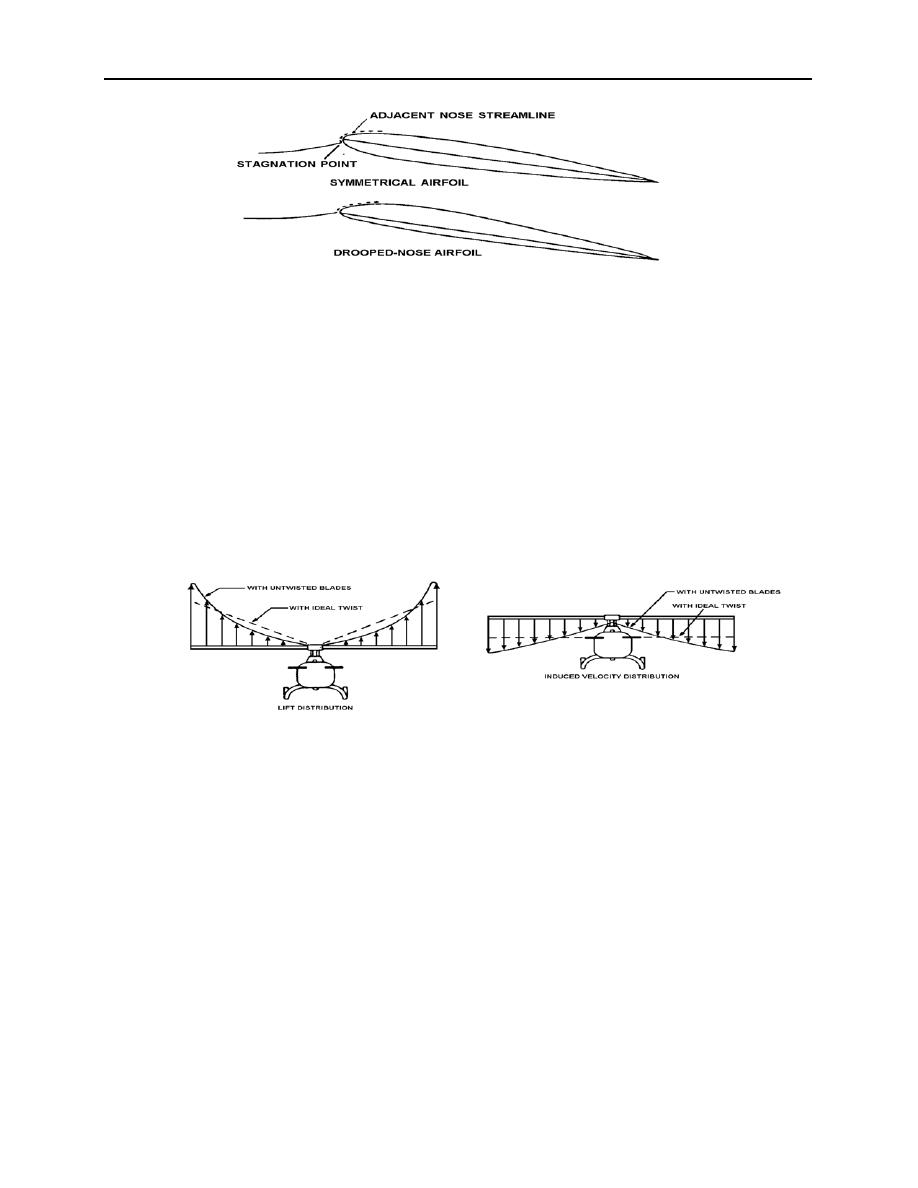 |
|||
|
|
|||
|
|
|||
| ||||||||||
|
|  HELICOPTER AERODYNAMICS WORKBOOK
CHAPTER 2
Figure 2-10
GEOMETRIC TWIST
Geometric twist is a blade design characteristic which improves helicopter performance by
making lift (and induced velocity) distribution along the blade more uniform. Consider an
untwisted blade. With rotational velocity being much greater at the tip than at the root, it follows
that AOA and lift will also be much greater at the tip. A blade with geometric twist has greater
pitch at the root than at the tip. A progressive reduction in AOA from root to tip corresponding
to an increase in rotational speed creates a balance of lift throughout the rotor disk. It also delays
the onset of retreating blade stall at high forward speed, due to reduced AOA. A high twist of 20
to 30 degrees is optimum for a hover, but creates severe vibrations at high speeds. No twist or
low twist angles reduces the vibration at high speed, but creates inefficient hover performance.
Blade designers generally use blade twist angles of 6-12 degrees as a compromise (figure 2-11).
Figure 2-11
FLAPPING
In order to maneuver the helicopter the rotor disk must be tilted. The rotor blades therefore
must be allowed some vertical movement. Vertical blade movement is termed flapping.
Flapping occurs for other reasons as well, which will be discussed later.
LEAD AND LAG
Rotor blades also tend to move in the horizontal plane. The reason for this is angular
momentum. Physics tells us angular momentum must be conserved (MVR2=C). This concept is
well illustrated by a spinning ice skater who increases his/her spin rate by pulling the arms
toward his/her body (figure 2-12). The same sort of thing occurs while the rotors are turning. As
the blade flaps its center of mass moves with respect to the center of rotation. When the blade's
center of mass is closer to the center of rotation it will tend to lead (move faster). If the blade's
ROTOR BLADE AERODYNAMICS 2-9
|
|
Privacy Statement - Press Release - Copyright Information. - Contact Us |